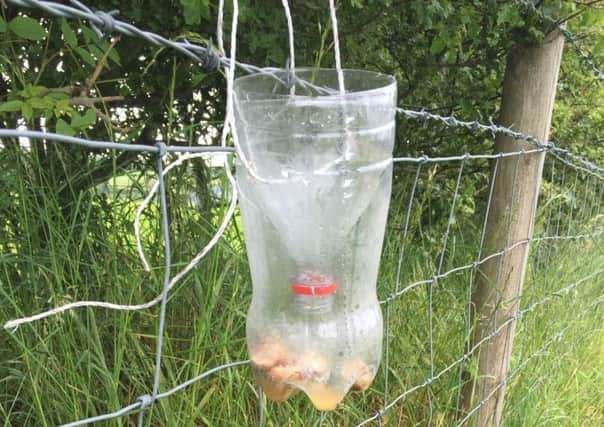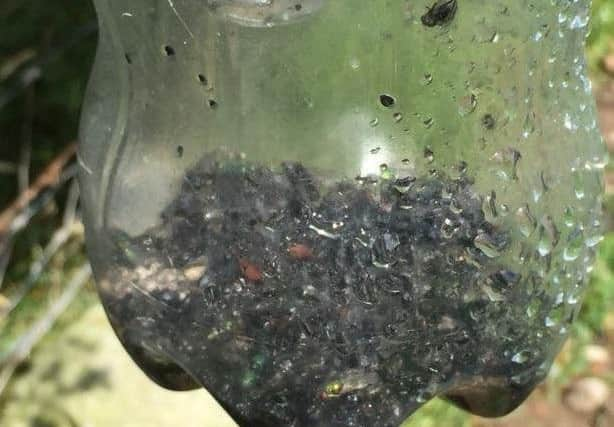Parasite Watch data highlights large numbers of flies


Aurelie Moralis, Veterinary Consultant with Zoetis commented: “This is the second year in a row where we have monitored flies on a Parasite Watch farm. This time last year not one fly was caught in the trap.”
To most people flies are ‘just a nuisance’ but on the farm you are very aware of their presence and that there are numerous different types. It is important to understand the impact they can have on production and disease transmission.
Aurelie outlines the variety, their effects and treatment.


Advertisement
Advertisement
Nuisance flies have mouth parts that are adapted for sponging and scavenging. They feed on sweat, skin secretions, teats, saliva, urine and faeces. Several species also act as vectors for a range of pathogens. Outlining the range of nuisance flies Aurelie mentioned the face flies which transmit Pink Eye; head flies which transmit summer mastitis in cattle and cause black cap or broken head in horned sheep.
Biting flies have piercing mouth parts that allow them to feed on blood – these include stable flies, horn flies, midges and mosquitoes. Biting flies cause intense irritation and can be vectors for disease transmission. Midges, for example, transmit viral diseases including Bluetongue virus and Schmallenberg virus. Stable flies, horn flies, horse flies and clegs all cause irritation and painful bites; some are also responsible for blood loss and transmission of disease.
Myiasis flies such as blow flies lay their eggs on wounds and the maggots feed on host tissue.
Fly numbers are determined by environmental factors such as temperature, humidity, breeding habitat, reproduction capacity and availability of hosts on which to feed. Environmental management can play a role i.e. the management of manure heaps, slurry lagoons ventilation, bedding and effluent drainage.


Advertisement
Advertisement
Economic losses are suffered due to hair or wool loss, skin damage, poor performance and weight loss, reduced production and increased treatment costs. There are also indirect costs from disease transmission.
Treatment of flies includes:
Fly & Lice Spot On™ – a 1% topical deltamethrin application. Deltamethrin has been shown to provide up to eight weeks protection with activity against midges for up to five weeks. It is an effective fly killer – not a fly repellent.
Flectron® Fly Tags are resin impregnated ear tags containing cypermethrin which provide season long protection for flies on cattle.
Dysect™ Sheep 12.5 g/l Pour-On is licensed for treatment and prevention of blow fly strike as well as lice and ticks in sheep. Dysect™ Cattle 15g/l Pour-On will provide fly and lice control in cattle for up to 8 weeks.
Advertisement
Advertisement
Insect Growth regulators (IGRs) are used in the prevention of blow fly strike in sheep as they act on the maggot stage and should be used before periods of anticipated challenge.
Pour-On and Spot-On treatments are simple, low labour, stress free methods of application, applied on the back or on one spot in the middle of the back. The drug diffuses into the lipid layer of the wool and/or skin and spreads across the body.
Aurelie’s advice is to treat now and treat regularly to control the fly population. For further information on Parasite Watch follow #parasitewatch on Twitter (@sheep_farmers) and Facebook (SheepfarmersUK). Farmers can also see how to make these simple fly traps on the #parasitewatch page of Twitter in order to determine the fly population in their own area.